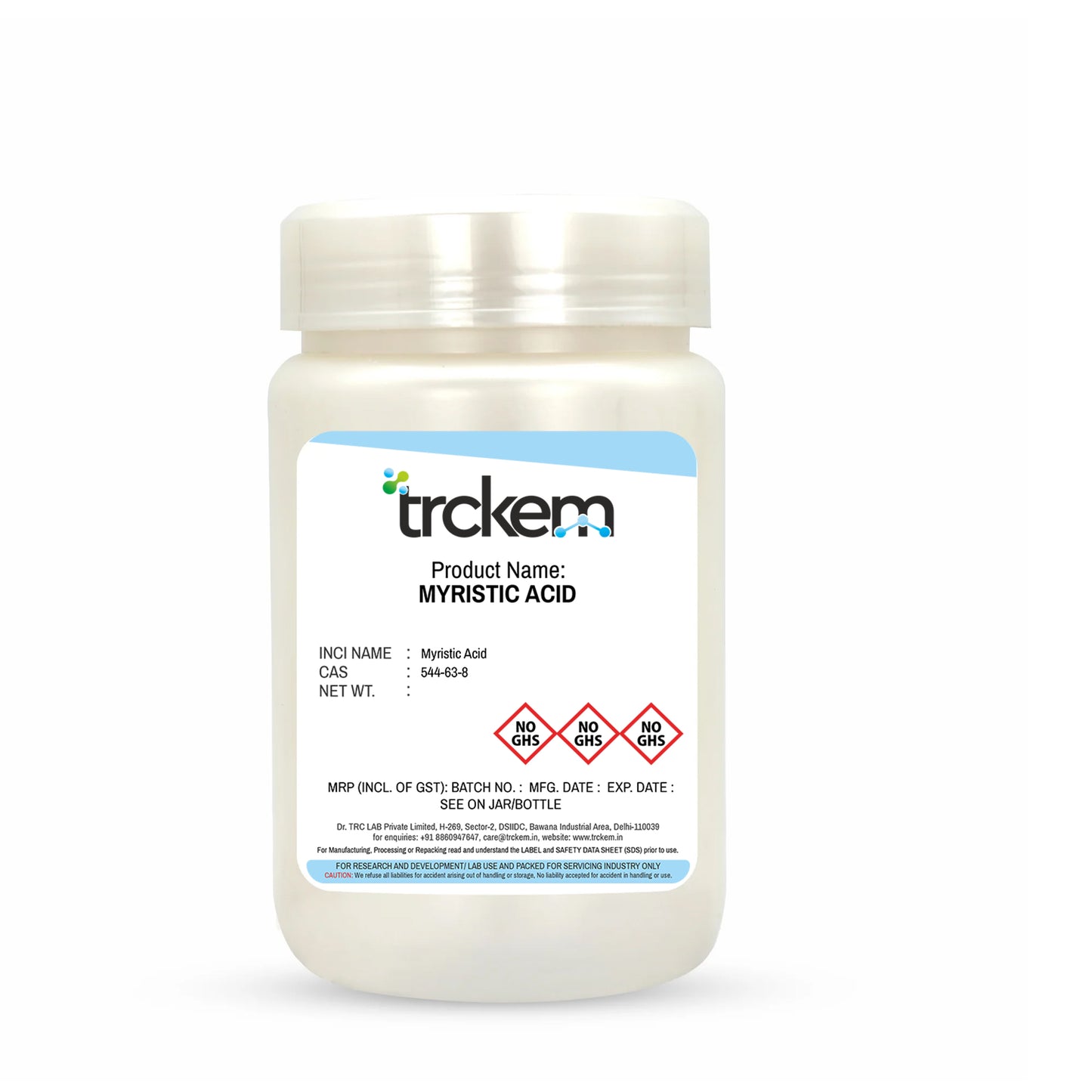

FAQ (Frequently Asked Questions)
1. What is Myristic Acid?
Myristic Acid is a saturated fatty acid commonly used in personal care and cosmetic products. It is derived from plant-based oils (such as coconut and palm oil) or animal fats and is known for its cleansing, emulsifying, and emollient properties.
2. What is the CAS number and INCI name of Myristic Acid?
CAS Number: 544-63-8
INCI Name: Myristic Acid
3. What are the benefits of Myristic Acid in personal care products?
Myristic Acid is valued for its:
Cleansing properties: Effectively removes dirt and excess oil from the skin.
Foaming ability: Enhances the lather in soaps and cleansers.
Moisturizing effect: Helps retain skin hydration.
Emulsification: Assists in blending oil and water-based ingredients.
Softening & smoothing: Provides a silky feel to skincare products.
4. How does Myristic Acid work in cosmetic formulations?
Myristic Acid acts as a surfactant and emulsifier, helping to lift away impurities and blend different ingredients seamlessly. It also improves the texture of creams, lotions, and cleansers.
5. Is Myristic Acid safe for all skin types?
Yes, Myristic Acid is generally safe for most skin types, but it may cause mild irritation in people with highly sensitive or acne-prone skin, especially when used in high concentrations.
6. What types of personal care products contain Myristic Acid?
Myristic Acid is commonly found in:
Facial cleansers & body washes
Shaving creams & foams
Moisturizers & lotions
Soaps & shampoos
Sunscreens & lip balms
Makeup removers
7. Can Myristic Acid be combined with other ingredients?
Yes, Myristic Acid is often combined with:
Other fatty acids (lauric acid, palmitic acid) for enhanced emulsification.
Surfactants (SLS, SLES) to improve cleansing and foaming.
Emollients (glycerin, shea butter, coconut oil) for added moisture.
8. Does Myristic Acid cause any side effects?
Myristic Acid is safe when used within recommended concentrations, but potential concerns include:
Mild skin irritation in sensitive individuals.
Possible clogging of pores in acne-prone skin when used in high amounts.
9. What is the recommended concentration of Myristic Acid in personal care formulations?
1% to 5% in creams and lotions.
Up to 30% in soaps and cleansers.
10. Is Myristic Acid natural or synthetic?
Myristic Acid is naturally derived from sources like coconut oil, palm oil, and nutmeg butter, but it can also be synthetically produced.
11. Where can I purchase high-quality Myristic Acid for formulation purposes?
Myristic Acid is available from cosmetic raw material suppliers, chemical distributors, and specialty ingredient manufacturers. Choose cosmetic or pharmaceutical-grade Myristic Acid for the best results.



